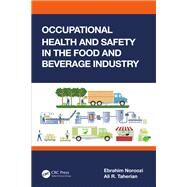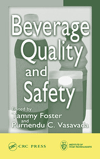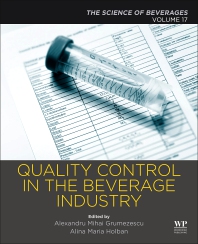Operations Perspective
Understanding safety practices and related costs in beverage warehouses
Private companies, government approved agencies offer valuable resources

The beverage arena presents an environment of skilled people capable of operating and maintaining high speed machines and devices that require considerable safety precautions involving the physical facility, machinery and the people who work there.
From a beverage facility viewpoint, production or distribution must contain safety amenities ― lighting, ventilation, space ― that protects employees from potential accidents or injury. Investigations and studies into past and current practices and policies regarding the safety issue have revealed interesting results, especially in today’s high tech type of operations.
Many beverage facilities, older and newer versions, are adequately addressing and converting to safer workplace situations as well as creating safety programs ― by edict or agency compliance. Partially driven by the second part, time and cost are tied to the safety issue.
One of the major problems encountered is the implementation of programs and management support focused on getting actual results. Results that include the establishment of a bona fide safety “attitude” which is absolutely essential to accomplish intended objectives. In fact, the issue of safety is an attitude oriented subject. Many approaches have been tried and tested with questionable success in the outcome. The real time situation can probably best be handled by selecting a qualified safety specialist to address the plants safety policy and plans. Private companies and government approved agencies are good sources to procure such a person.
Considerable emphasis must be placed on the “attitude” aspect of safety because it involves some main components of most beverage operations:
- The facility must constantly represent a safe place to work, realistically, practically and safely.
- The machinery and equipment must be installed in a manner that presents a safe working area under variable operating and frequently changing conditions ― protected space, ventilation, lighting.
Apart from the facility, a similar approach is necessary for machinery and equipment ― safety switches, guards of all types, audible horns, flashing lights. In most high-speed machinery, similar safety alerts are now integrated into the machines operating function.
From an operations perspective, the prudent use of safety devices is only part of the second issue: the safe protection of personnel to minimize the risk of injury and related production downtime. How much is attributable to safety device failure? Non-use and non-availability are still on the drawing boards. The downtime list has an extensive number of causes and the potential injury occurrence can be documented in terms of cost. The equation can be a complex array of variables.
Further surveys, contacts and experience have indicated that production and distribution facilities must usually adhere to codes and local regulations. Most of these regulations address the three areas in detail, facilities, equipment and personnel protection. What is not addressed is the cost of downtime, whether caused by safety device failure or other operational mistakes or attitude pertaining to safety can be a debatable subject. It is a reality today.
Whether downtime cost is attributable to safety practices or lack thereof, safety is priority from any viewpoint and a sound investment.
Looking for a reprint of this article?
From high-res PDFs to custom plaques, order your copy today!







